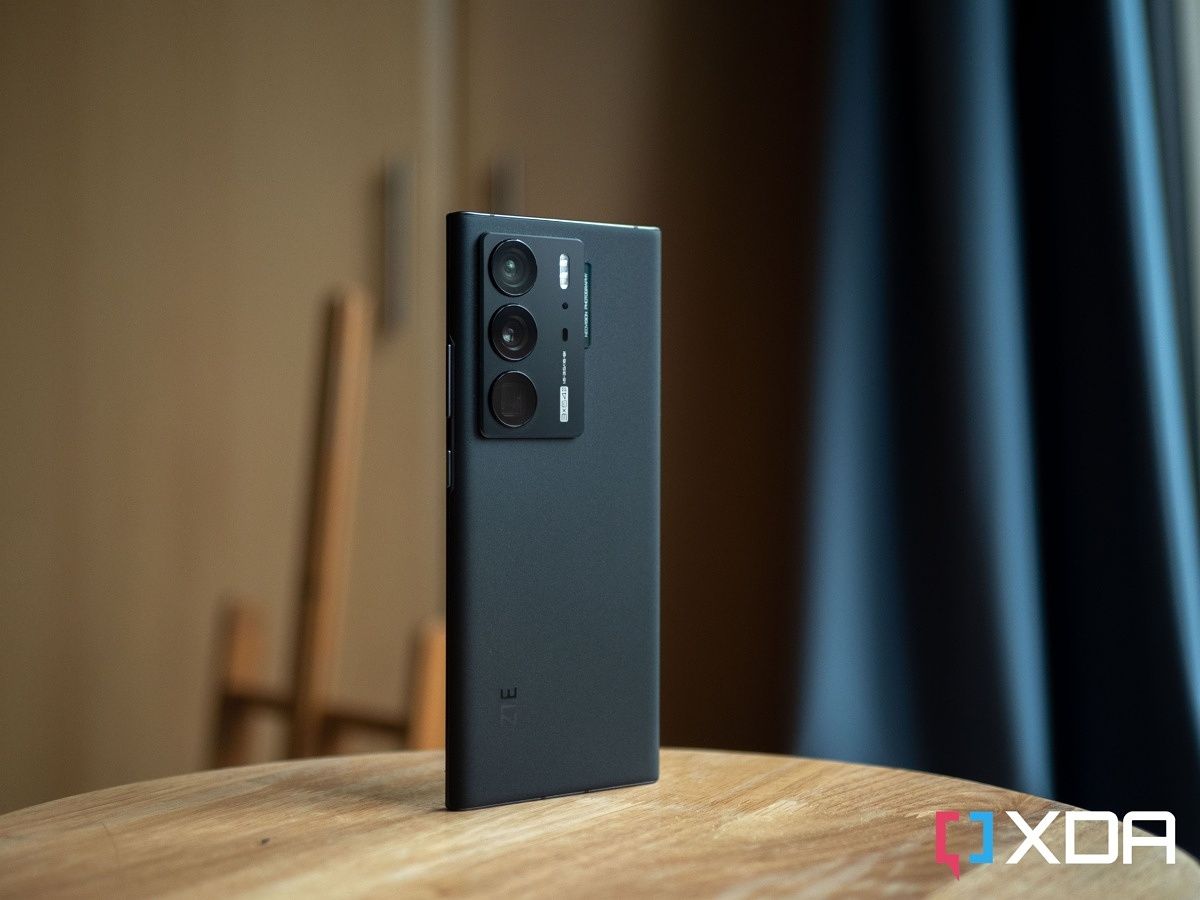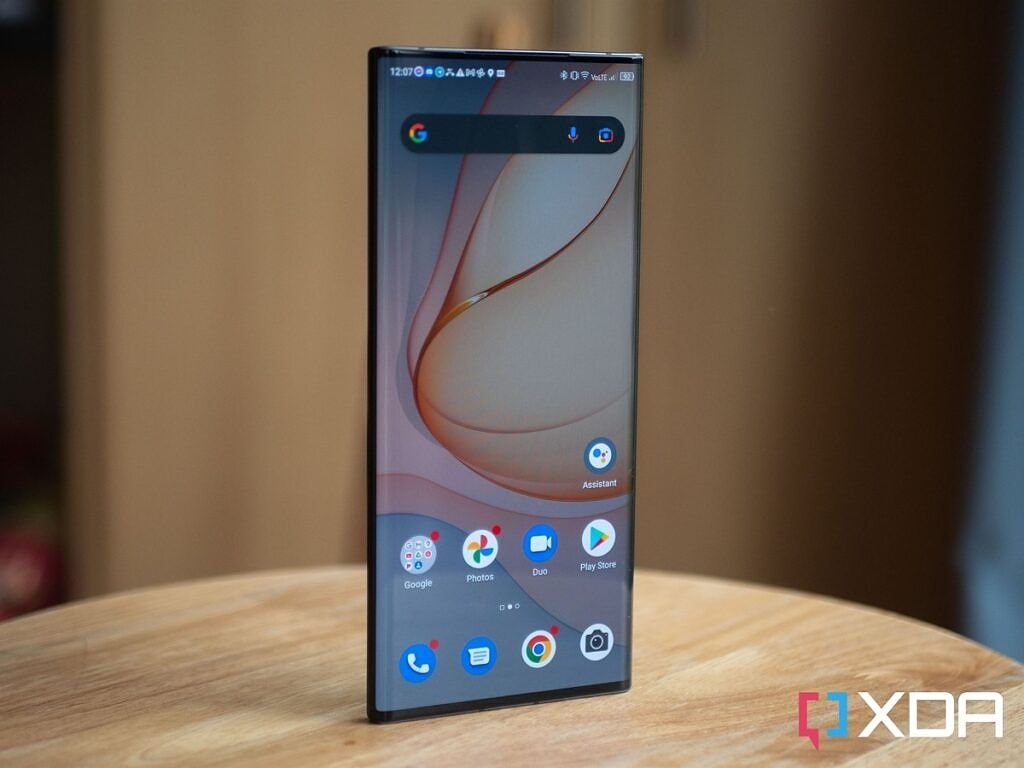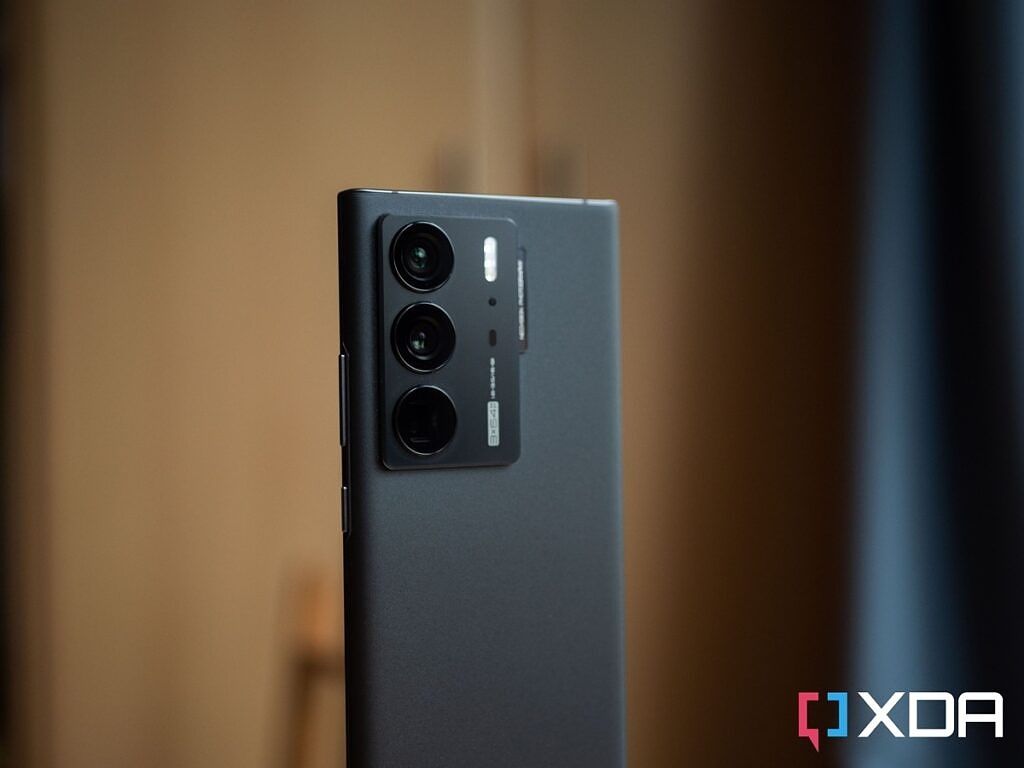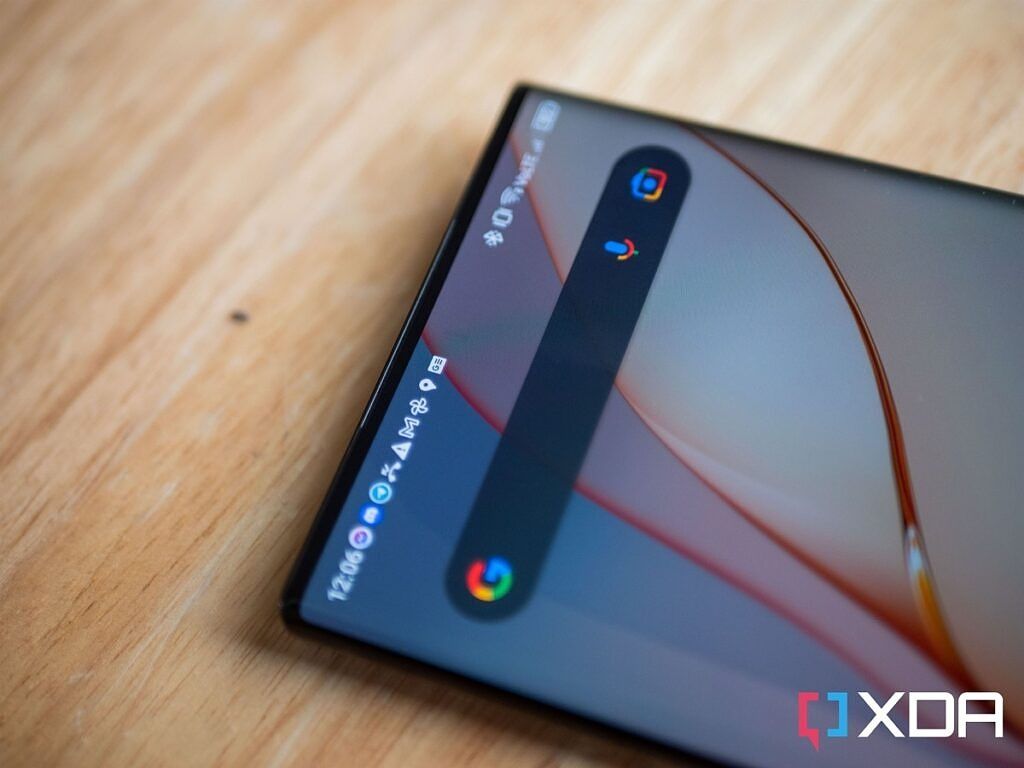ZTE has been working on its under-display camera tech for quite a while now, with the ZTE Axon 20 5G being one of the first commercial devices to pack one. Back then it wasn't great -- the pixel density over the camera was incredibly low and stood out like a sore thumb, and the picture quality itself wasn't very good. Now, two generations later with the ZTE Axon 40 Ultra, the company has improved on its under-display cameras a whole lot.
However, even without the headlining feature of an under-display camera, the ZTE Axon 40 Ultra is a fantastic phone in its own right. The flagship Snapdragon 8 Gen 1 chipset alongside the Full HD 6.8-inch panel makes it a premium experience, and the build quality of the phone is excellent in the hand. Even better is the fact that the display is completely unimpeded by any kind of notch or punch hole, making it an excellent smartphone for media consumption.
Is the ZTE Axon 40 Ultra worth your money, though? It's hard to say. If you find yourself taking selfies more than once a month, then it's best to give it a pass. Alternatively, if it's rare you take a selfie but you want it to be the best possible quality when you do, then you should still pass. If selfies don't matter to you, though, then read on. This may be the phone for you.
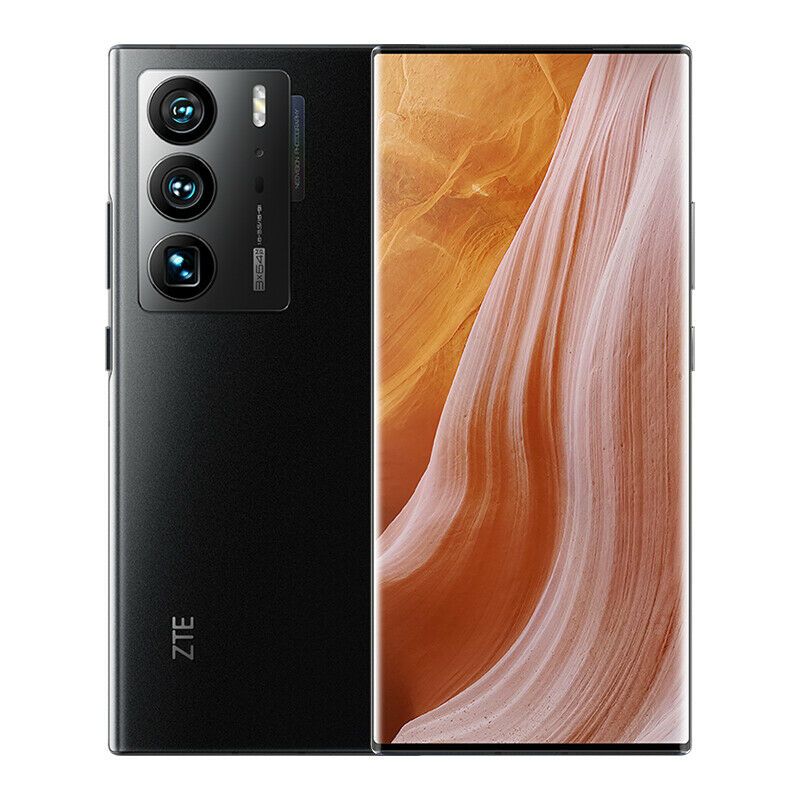
ZTE Axon 40 Ultra
The ZTE Axon 40 Ultra has an under-display camera that doesn't do a great job, but stays well hidden. It packs other flagship specs too that help it contend as a top smartphone.
ZTE Axon 40 Ultra: Specifications
|
Specification |
ZTE Axon 40 Ultra |
|---|---|
|
Dimensions & Weight |
|
|
Display |
|
|
SoC |
|
|
RAM & Storage |
|
|
Battery & Charging |
|
|
Security |
In-display optical fingerprint scanner |
|
Rear Camera(s) |
|
|
Front Camera(s) |
|
|
Port(s) |
|
|
Audio |
|
|
Connectivity |
|
|
Software |
ZTE MyOS based on Android 12 |
|
Colors |
|
ZTE Axon 40 Ultra: Design
- Beautiful design
- Big camera array
- Completely unimpeded display
The ZTE Axon 40 Ultra packs an incredibly premium design, with thin bezels and a soft-touch glass back that sparkles under specific lighting conditions. It feels good in the hand and the camera island on the back packs three equally-sized sensors, along with additional camera branding. Finally, the "ZTE" insignia is emblazoned on the bottom.
The ZTE Axon 40 Ultra packs an incredibly premium design
The front of the phone is equally premium. The large 6.8-inch panel goes edge to edge thanks to the waterfall display, and the corners have such a small radius that it doesn't quite look like they're curved. It basically looks like a recent Samsung Galaxy Note/S22 Ultra, or a Google Pixel 6 Pro.
The best part of the front is how completely undetectable the under-display selfie camera is. It's way harder to see this time around, and it's very easy to forget that it's even there. Watching Netflix, YouTube, and just using my phone is extremely nice thanks to it. It's something I missed from the likes of the OnePlus 7 Pro with its pop-up camera, and while the Axon 20 nearly scratched that itch for me, the low pixel density around the camera ruined it.
When it comes to pixel density, I was worried that the Full HD panel would be poor on this size display, but I was wrong. It looks good and is barely noticeable when just using your phone -- though I still wish it had a Quad HD display. I do wonder if the lower pixel density of the Full HD panel is helpful for the camera, as it would explain why an otherwise super-flagship phone only has a 1080p display.
Focusing on that under-display camera itself, it's possible to see it, but only in specific lighting and only when tilting the phone a certain way. It's much harder to catch it, and you won't really ever spot it when looking at it head-on. It's a big improvement from the company's past devices that packed this camera system, as you'll nearly never see it. Even in the above photo, you need to look hard for it. Here's a tip: look directly beside the Google News notification icon.
ZTE Axon 40 Ultra: Cameras
- Completely "meh" front camera
- Decent back cameras
Selfie camera
While the selfie camera on the ZTE Axon 40 Ultra is better hidden than ever before, it's hard to say that it's actually improved by much. It still looks "soft" in how it smoothens out photos, and it struggles with any strong light sources. When in direct light, any light sources shown in the viewfinder will bloom heavily and destroy the photo quality entirely. “Bloom” in photographs refers to the halo-like effect which is visible around light sources in photos and is a problem in particular on under-display cameras.
If you want to get a phone where you know you'll be taking a lot of selfies, then stay away from this one
The reason for the poor selfie quality is because it's as if you were trying to take a photo through a window -- which is literally what's happening, except it's through your phone screen. If you want to get a phone where you know you'll be taking a lot of selfies, then I suggest staying away from this one. I would never use this phone camera for taking selfies with friends and family, but I can see it being used sometimes for video calls and the like.
All in all, this feels very similar to the selfie camera on both the ZTE Axon 20 and the ZTE Axon 30. The company has gotten better at hiding its under-display cameras for sure, but I'm not sure I can say they've improved the quality all that much.
Back cameras
The back cameras on the ZTE Axon 40 Ultra, however, are actually quite decent. I've used better across a ton of other devices, but they still do a good job at providing consistent quality across all three lenses as they maintain great hardware for all three rear cameras. I'm a big fan of the versatility, as it doesn't feel like I'm downgrading just because I switch to another sensor. All three punch at about the same level, which is an often overlooked aspect of smartphone cameras.
Shooting with the primary camera on this phone feels a little bit zoomed in, and that's thanks to the 35mm equivalent focal length. ZTE says it allows for better photos, but the problem is that it can just be annoying to shoot with as it means you need to back up from your subject even more when taking a photo.
Performance
- Typical Snapdragon 8 Gen 1 heat vs. performance challenges
- Interesting throttling performance
The Qualcomm Snapdragon 8 Gen 1 is the latest flagship chipset from Qualcomm, and it's the basis of pretty much every flagship phone we've seen released so far. It's a powerful chip, though we've consistently seen manufacturers struggling to tame it and the heat that it generates. ZTE is no different in that regard, as the ZTE Axon 40 Ultra manages to strike a balance between power consumption and performance. There are some missteps, but overall, it's a very decent implementation.
The ZTE Axon 40 Ultra manages to strike a balance between power consumption and performance
First and foremost, it's important to mention that yes, at times, the phone can indeed end up feeling slow or laggy. I especially notice it when unlocking my phone, though the same can occasionally happen when opening the camera app too. I also came across this on the Honor Magic 4 Pro, and I think it's a result of throttling the chipset. Cameras are pretty hefty on the software computational side, and it would make sense that it might struggle if the chip is being throttled.
The results obtained through CPU Throttling Test and Geekbench 5 are representative of what the Snapdragon 8 Gen 1 can achieve though. I found it interesting when running CPU Throttling Test, as it started off quite poor, and picked up pace over the course of five minutes or so. It would spike up then back down, getting slightly higher on some spikes than others.
This behavior was consistent across multiple runs, and I believe there may be some clever process scheduling going on to try and figure out if an application requires consistent additional resources. I've never seen this behavior when running this test before, but it's interesting to see and just might be a unique approach to dealing with this chipset.
Battery and charging
- Uses 65W Power delivery charger included in the box
- Charges to full in ~40 minutes
The battery life on the ZTE Axon 40 Ultra has been quite impressive, and that may be because of how ZTE is handling the chipset. I was achieving anywhere between four and six hours of screen on time when using my smartphone, with the higher-end of that spectrum seemingly being nearly unachievable with this generation of flagship phones.
That 5,000 mAh battery in the ZTE Axon 40 Ultra can be charged at 65W with the included charger in the box, and that charger also supports USB Power Delivery with PPS. That means not only can you fast charge your phone, but you can also use it to fast charge other devices too like the Nintendo Switch or the Samsung Galaxy S22 series. Plenty of gadgets use Power Delivery and even more are going to thanks to the European Union, so it's likely this will end up being one of the best USB PD chargers.
As for charging speed, I've found that the ZTE Axon 40 Ultra charges generally in around 40 minutes, which is pretty stellar for any smartphone. I don't have any complaints in that department.
ZTE's MyOS isn't great
- It has a really nice implementation of Android 12.
- Aggressive background task killing and delayed notifications hold it back.
- ZTE's longer-term update track record is abysmal.
The ZTE Axon 40 Ultra comes with MyOS based on Android 12, and it has a few good ideas that set it aside from the rest of the crowd. Spoiler, I really wanted to like it. It's a unique flavor of Android with some good ideas, and as far as Android variants go, it's certainly not the worst that I've used. Nevertheless, it has quite a few problems. I'll start with what I like first, though.
Looks-wise, it actually retains quite a lot of the Android 12 look and feel. It has four large toggles at the top, and pulling down the notification shade to its next level will show additional toggles. You can also create a customizable always-on display, modify your lock screen, and change a lot about the launcher, too. From a usability perspective, the launcher is one of the best I've used that's come preloaded on a smartphone. It has an app drawer that you can scroll through alphabetically on the left-hand side, and there are a few personalization options too, including animation choices.
Now, some of the stuff I don't like that's incredibly frustrating. For starters, the notification center itself feels incredibly disjointed. Even in the screenshots above, you can see how "Device controls" is almost long enough to extend outside of the bubble. The icons below quick settings feel jumbled and confusing. I've also found that when I'm listening to music, it doesn't anchor Spotify or YouTube to the top of my notifications like Android is supposed to. It's treated as any other notification and thrown somewhere in the rest of the pile.
When it comes to notifications, I just don't get a lot of them
Not only that, but when it comes to notifications, I just don't get a lot of them. The worst offender is Slack, where for some reason, they come in delayed. I don't mean delayed as in they take a few minutes to arrive but if I open the app they arrive instantly, I mean delayed. I can get a message from a colleague on Slack, reply to it on my phone, and then close the app and get a notification minutes later. It's a behavior I have only ever experienced one other time, and that was with the OnePlus Nord 2. It's also particularly overzealous at killing apps in the background, with it taking several minutes at a time to get Facebook Messenger notifications.
MyOS is so close to being a really good Android variant, and so far, I'm mostly enjoying it. As well, while the company hasn't been known for its commitment to software updates, I've already received three updates throughout the review period. They'll almost certainly taper off, but I'm hopeful that ZTE may stay on top of things a bit more this time around versus the company's previous attempts at updating its own flagships. For context, the ZTE Axon 30 Ultra from last year is only now starting to get a stable Android 12 build... in China. Don't buy this phone for the update promise, albeit we stay hopeful for a turnaround.
ZTE Axon 40 Ultra: Miscellaneous
Signal strength
The ZTE Axon 40 Ultra has no problem holding a signal pretty much wherever I am. I get VoLTE too for high-definition calls, though I can't get Wi-Fi calling working for whatever reason.
Speakers
The speakers are loud, but not the loudest that I've used. They're a pair of dual speakers with the top-firing speaker being quieter than the bottom-firing. They get the job done and are your typical smartphone speakers, so you know what to expect here.
Vibration motor
The vibration motor on the ZTE Axon 40 Ultra is pretty good, and the haptic feedback feels good when typing. I've missed a few notifications on occasion when it's in my pocket, but not often enough that I think it's a weak motor.
Bootloader and kernel sources
The kernel source for the ZTE Axon 40 Ultra is currently available on ZTE's own website. As for bootloader unlocking, it's currently not officially possible.
Box contents
- Phone (duh)
- 65W charging brick
- USB-C to USB-C cable
- Basic case
Should you buy the ZTE Axon 40 Ultra?
The ZTE Axon 40 Ultra is a phone with a lot of compromises, but it's aimed at a very specific type of user. If you don't care about the selfie camera, it's probably already high up on your list thanks to that stellar display. Coming in at €829 though, it's a pretty tall ask when there are smartphones with a lot of the same features and better cameras for a lot cheaper.
For example, in Europe, you can save €80 and get the Realme GT 2 Pro, a phone that honestly offers a lot more. You get a longer support window, much better cameras, the same charging speed, better software, and a much nicer QHD+ LTPO display. The ZTE Axon 40 Ultra's best selling point is the display, but even that a lot of people likely won't care about and falters behind the display tech of a cheaper phone. A friend of mine saw the ZTE Axon 40 Ultra and thought it was cool, but pointed out that the front-facing camera on their phone doesn't bother them because it's in the center of the status bar anyway. To be honest, I completely see where they're coming from.
Do consumers really care that much about punch-hole cameras?
It's great to see ZTE spearheading under-display camera technology, but I don't know how much consumers care. While photos and videos still look awful, most people won't care if they get a few pixels back on their phone's display. I like it for viewing content, but the trade-off isn't worth it. Just like small phones, the demand is there for a very niche userbase, but time and time again it's been shown that people overall prefer the versatility of a larger phone. The same can be said here about the front-facing camera.
Is this phone worthy of the "Ultra" tagline, then? I think despite the flaws in its camera system, I think so. ZTE has crafted a magnificent smartphone here, even if it's not the best of the best that you can get. I like it and you probably will too, but the price tag is something that you'll need to weigh up against the competition to see if it's really worth your money.
The ZTE Axon 40 Ultra is available in the following regions, at $799/829 euros/709 pounds.
- North America: Canada, United States (56 of 62 states. American Samoa, Guam, Hawaii, Northern Mariana Islands, Puerto Rico, U.S. Virgin Islands not included)
- Europe: Austria, Belgium, Bulgaria, Croatia, Cyprus, Czechia, Denmark, Estonia, Finland, France, Germany, Greece, Hungary, Ireland, Italy, Latvia, Lithuania, Luxembourg, Malta, Netherlands, Poland, Portugal, Romania, Slovakia, Slovenia, Spain(50 of 52 provinces), Sweden, United Kingdom
- Middle East: Israel, Kuwait, Saudi Arabia, United Arab Emirates
- Asia Pacific: Australia, Hong Kong SAR, Indonesia, Japan, Macao SAR, Malaysia, Philippines, Singapore, South Korea, Thailand, Vietnam
- Africa: South Africa (8 of 9 provinces)

ZTE Axon 40 Ultra
The ZTE Axon 40 Ultra has an under-display camera that doesn't do a great job, but stays well hidden. It packs other flagship specs too that help it contend as a top smartphone.

